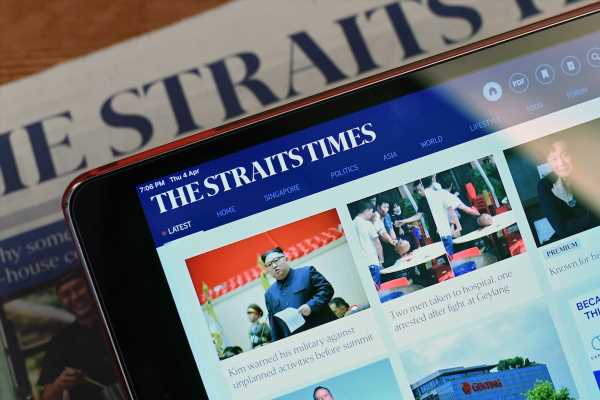Singapore has set its sights on up to four 5G networks, instead of the two initially planned for, as it takes bolder steps to embrace a technology believed to be crucial to the nation’s economic growth.
All four networks can be rolled out by next year, although nationwide coverage will take much longer and be limited to only two networks due to the scarcity of 5G airwaves for islandwide reach.
These scarce airwaves, that enable nationwide reach, will become available only in 2021, and wider coverage will start being rolled out in 2022. However, all four networks may offer localised coverage next year.
The Infocomm Media Development Authority’s (IMDA) more aggressive push to have two extra smaller 5G networks factors in immediate industrial needs – for example, in smart ports and smart factories to remotely operate cranes or vehicles to move shipping containers or goods round the clock.
A public consultation completed in July elicited calls to involve all four telcos here – Singtel, StarHub, M1 and TPG Telecom – to spur innovation.
The authority had originally planned to give out licences to operate only two 5G networks with nationwide coverage built with the most advanced technologies that do not piggyback on existing 4G technologies.
Announcing the decision yesterday, Minister for Communications and Information S. Iswaran said Singapore can accommodate two more localised 5G networks in addition to two nationwide ones to involve all four telcos here.
“IMDA expects the greater competition to benefit consumers and businesses, and bring about greater choice, more competitive prices and service innovation,” he said. “Singapore’s 5G ecosystem will be the backbone of our digital economy.”
The IMDA’s current position does not compromise Singapore’s original intention to be among the front runners in the roll-out of next-frontier applications, possible only through a full-fledged 5G network.
20
Number of times faster the full-fledged 5G network’s surfing speeds can be, compared with 4G networks.
The technology promises surfing speeds 20 times faster than what 4G networks offer and the ability to connect 1,000 times as many devices. A full-fledged 5G network will also be able to support critical applications such as driverless car navigation and remote surgery that requires a constant connection without lag.
Operators have been asked to submit detailed proposals by January next year, after which 5G airwaves will be assigned. Two networks will be earmarked for nationwide coverage.
The proposals will be assessed on factors such as network security design and ability to achieve 50 per cent islandwide coverage by end-2022.
Operators of the nationwide 5G network need to each offer at least $55 million for the scarce 3.5GHz band of airwaves to provide nationwide coverage.
Meanwhile, operators of the two smaller 5G networks will pay only an annual utilisation fee and be given the millimetre wave (mmWave) spectrum. They are allowed to piggyback on existing 4G technologies initially as 5G technologies for mmWave deployments are not available yet.
The race for 5G supremacy is linked to economic progress, and is at the centre of an ongoing trade war between the United States and China.
The US has also been trying to stop its allies from using 5G mobile systems supplied by Huawei, citing espionage concerns. It has said it will evaluate how to share intelligence with governments that have 5G networks using equipment from “untrusted vendors”, referring to Huawei.
Mr Iswaran said that Singapore has not banned any vendors. He added: “We have emphasised the need for resilience and vendor diversity in our systems, and also that the systems meet our security requirements.”
Source: Read Full Article
